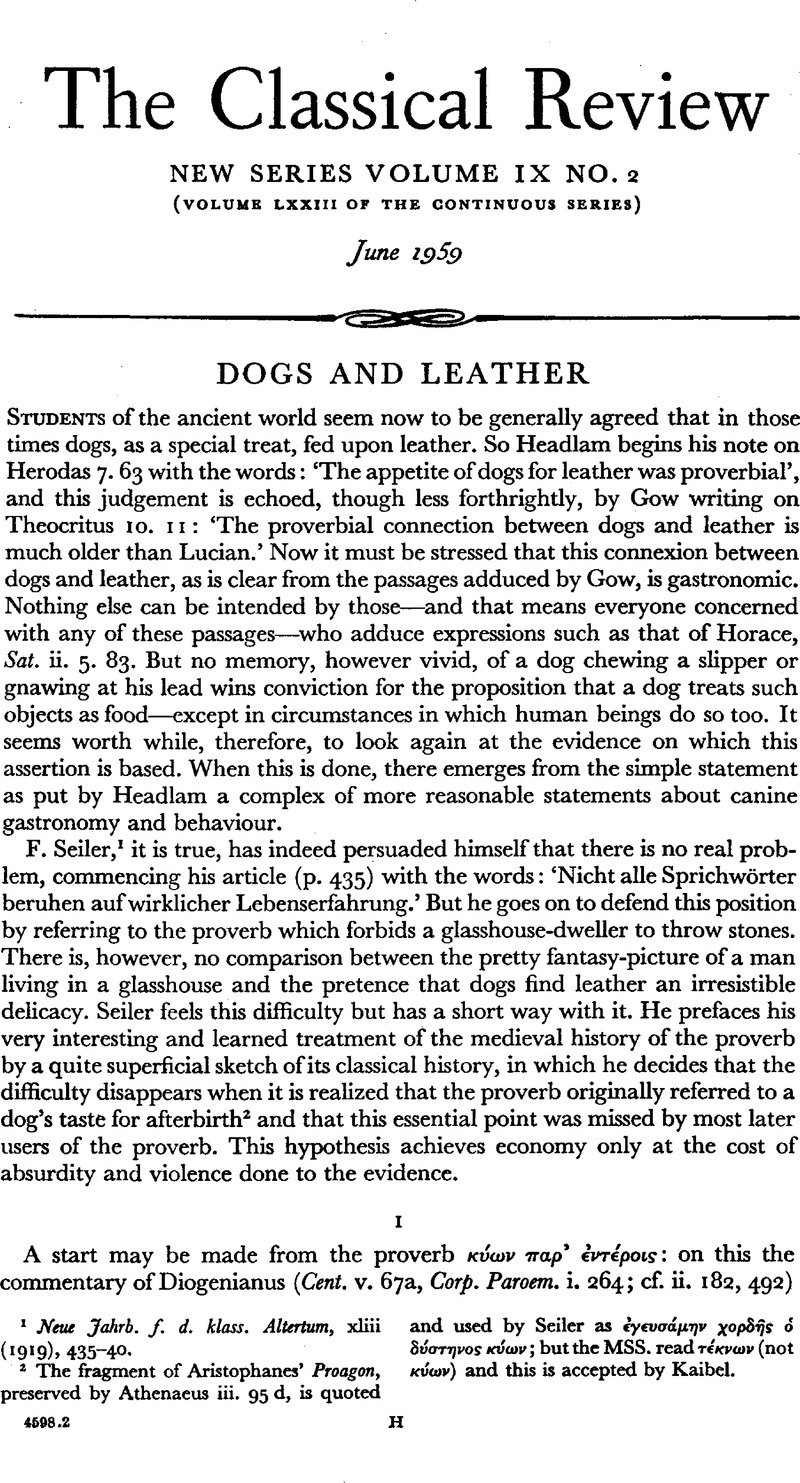No CrossRef data available.
Article contents
Dogs and Leather
Published online by Cambridge University Press: 13 February 2009
Abstract

- Type
- Review Articles
- Information
- Copyright
- Copyright © The Classical Association 1959
References
page 97 note 1 Neue Jahrb. f. d. klass. Altertum, xliii (1919), 435–440.Google Scholar
page 97 note 2 The fragment of Aristophanes' Proagon, preserved by Athenaeus iii. 95 d, is quoted and used by Seiler as ⋯γευσ⋯μην χορδ⋯ς ⋯δ⋯στηνος κ⋯ων; but the MSS. read τ⋯κνιων (not κ⋯ων) and this is accepted by Kaibel.
page 99 note 1 It is true that these passages refer to leading a dog out, but it would seem natural to use the same lead to secure him. A catena appears more usual for tying a dog up in Rome: cf., for example, Persius 5. 160; Sen. de ira iii. 37. 2; Petron. 29 (Porph. ad Hor. epp. i. 17. 27 ‘catena autem proprie dicta est quod canem teneret’ may be mere etymologizing); but this may just be the more usual word for the object, regardless of its material.
page 99 note 2 Cf. also Apostolius, , Cent. xv. 53Google Scholar a (Corp. Paroem. ii. 643).


